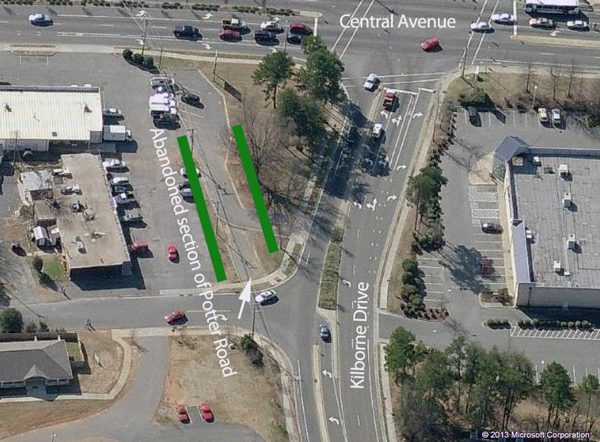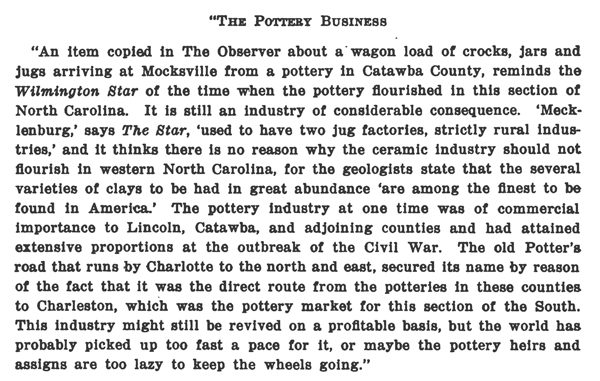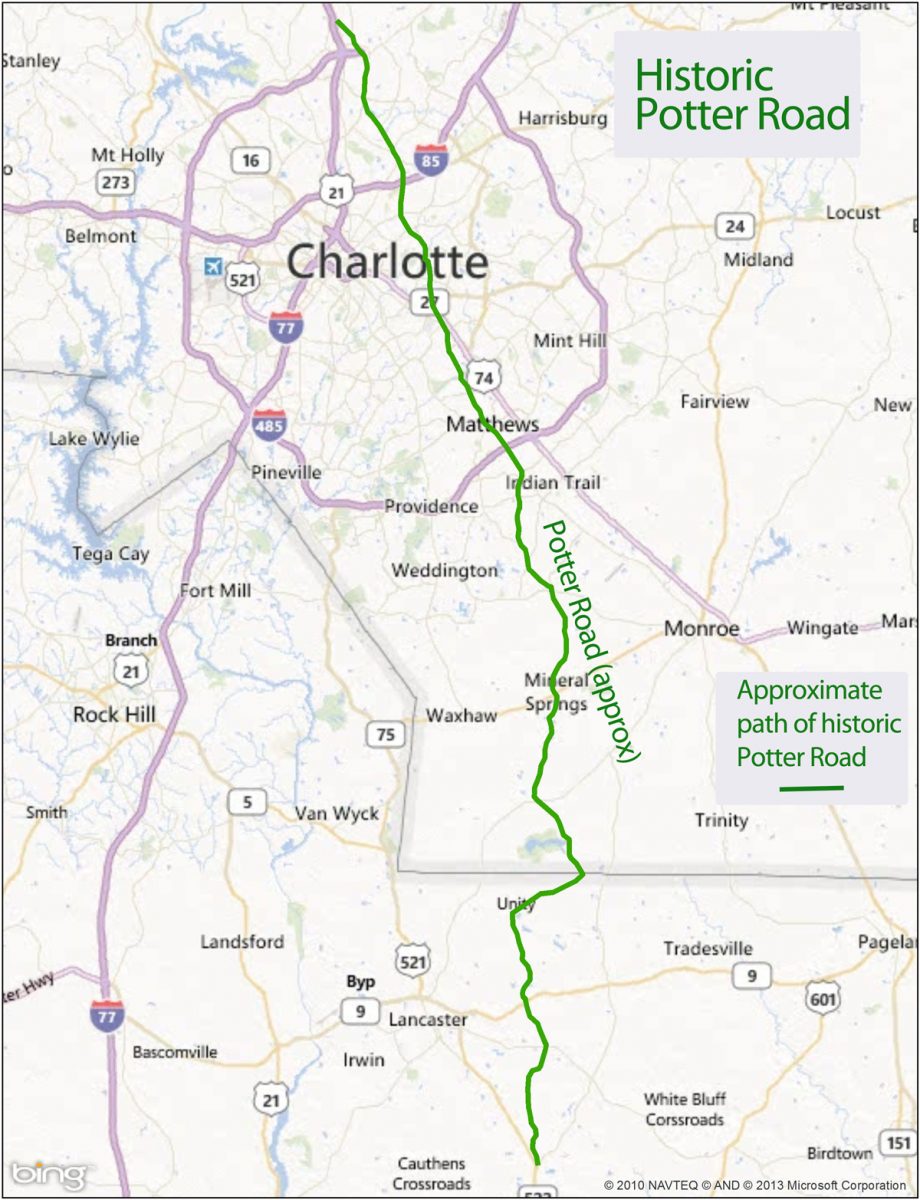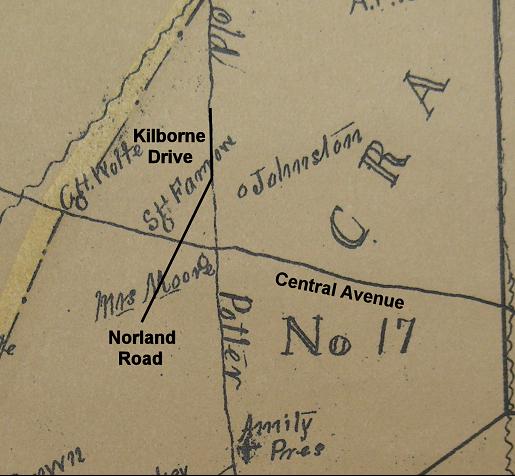Discovering Charlotte’s past on Potter Road

Some well-known intersections in the city hide the remnants of a now forgotten, but once major highway through the Carolinas. It was known as Potter Road and its name referred to the one-time pottery industry in western Lincoln County. Today, after neighbors pushed the city to save a piece of the old road’s route, an obscure patch of trees at Central Avenue and Kilborne Road is all that’s left to tell the story.
2016 UPDATE: WHERE DID POTTER ROAD GET ITS NAME?Research in 2014 by Charlotte historian Jim Williams indicates a south Charlotte road, near Four Mile Creek, named for Gordon Potter, who settled in the area in the 1780s. That was long before there was a commercial pottery industry in Lincoln County. |
During its settlement in the 18th century, two main roads crossed through what is now Mecklenburg County, the Great Wagon Road and Old Potter Road. These roads crossed at today’s intersection of North Tryon Street and Eastway Drive.
Today, traces of Old Potter Road are visible in Evergreen Nature Preserve in east Charlotte, just north of the wooden footbridge near Tarrington Drive. On the 1886 deed of nearby Amity Presbyterian Church, which is framed and hanging on the wall of the Church’s history room, the road is labeled “Old Potter Road” where it passed the Church. The road is also depicted on maps of 1808, 1833, 1888, and 1911.
The name “Potter Road” originated during the early 19th century when commercial potters in western Lincoln County, N.C., began using this route to transport wares to markets in Charleston, S. C. (see Charlotte Observer editorial below).

During the 19th century, Potter Road extended 55 miles from Old Statesville Highway in Mecklenburg County, N.C., near its modern intersection with W.T. Harris, to the town of Pleasant Hill, S.C., on U.S. 521 south of Lancaster.

The name “Potter Road” is still in use in Union County, N.C., and Lancaster County, S.C., but in Mecklenburg County the road has been renamed almost everywhere. For example, sections of Sugar Creek Road, Eastway Drive, Kilborne Drive, Pierson Road, Amity Place, Conference Drive, and Monroe Road, were originally Potter Road. Today in North Charlotte, there is one short segment of the old road that bears the name ‘Potters Road’, a misspelling of the original name. The historical Potter Road did not have an ‘s’ in the name.

The map above shows the location of the modern Kilborne Drive / Norland Road / Central Avenue intersection on an historic map of Charlotte from 1888. “Old Potter Road” is shown crossing Central Avenue.
In 2002, the City of Charlotte voted to preserve a small triangle of land bounded by Kilborne Drive, Central Avenue, and the abandoned Old Potter Road (shown in the top photo in this article). This vote occurred after surrounding neighborhoods protested Charlotte DOT’s proposal to give the land to the adjacent shopping center for use as a parking lot. Through neighborhood involvement, the triangle was, instead, set aside to be used as open space, with a historical marker noting the importance of the Old Potter Road (marker has has yet to be placed).